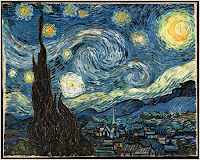Someone asked elsewhere, "I write historical fiction. But I love a good love story. And so I set out to write a story where the love story played a prominent role . . . I've read about a "formula" that most romances adhere to; I know that I haven't stuck to it."
Well . . . it might be. Then again, it might not. A 'love story' isn't enough to put you on the Romance shelves.
What it is --
There are many more titles on the shelf that call themselves 'Historical Romance' than there are titles in the 'Historical Fiction' section. Maybe it looks like it would be easier to go the Romance genre route.
But, not so much. The many Romances are not really germane to a book stuck in the no-man's land between Historical Fiction and Historical Romance. They're lighter reads. History is a backdrop in these books, not a main player. Getting a dense and accurate Historical Romance published is probably about as difficult as getting published in Historical Fiction.
What you cannot do is get a book published as Historical Romance if that is not what the book actually is. The agents and editors are really canny about this. They know.
To qualify as Romance -- (I'm talking via my direct link to Infallible Knowledge here) --
 (a) At least half the manuscript should be the male and female protagonists in the same scene, face to face.
(a) At least half the manuscript should be the male and female protagonists in the same scene, face to face. (b) Another quarter or so, if you can't put the two protagonists face to face, should be scenes directly related to the MMC (Male Main Character) or FMC (Female Main Character.)
(c) The POV should be either MMC or FMC, (unless it's Omniscient Narrator,) for more than 90% of the writing. You will see that this means almost every scene has one of the two protagonists in it.
(d) Here we come to the big one:
The central problem of the story -- the stuff that sends everybody into action -- is solved when the MMC and FMC finally get together at the end.
That is -- the central problem is not the Queen's Pearl being misplaced or Princess Elizabeth dodging the ax long enough to inherit. The central problem is that Thomas and Anne can't get married because their grandparents are feuding.
You know what problem is central to the story because most important actions the MMC and FMC undertake are motivated by that. We see them act in ways that will get them married rather than merely recover the Missing Pearls.
 (e) In a Historical Romance, the FMC should have considerable 'agency'. She does stuff, and important later events happen in response to her action.
(e) In a Historical Romance, the FMC should have considerable 'agency'. She does stuff, and important later events happen in response to her action.(f) The ending should be upbeat. There is a plausible HEA for the MMC and FMC. Everybody walks away smiling, except the villain.
(g) Nobody kills a puppy. This means the MMC's friend does not die lengthily on stage. Nobody the reader cares about dies.
(h) As a minor note, the word count is going to be under 120K. Better and more salable if it's under 100K.
(i) Roberta Gellis did this. Georgette Heyer got away with this once or twice. But a brand new Historical Romance author probably can't.
Do not write about history.
 By this I mean, be as accurate as you want, but do not have the narrator or any character tell us 'Why Henry VIII had money in the treasury when he inherited' or 'Why the 1814 Battle of Paris was a good deal more important that the Battle of Waterloo'. No consecutive 300 words should convey historical information.
By this I mean, be as accurate as you want, but do not have the narrator or any character tell us 'Why Henry VIII had money in the treasury when he inherited' or 'Why the 1814 Battle of Paris was a good deal more important that the Battle of Waterloo'. No consecutive 300 words should convey historical information. If the readers of dense, accurate, well-researched Historical Romances want to read Historical Fiction, they know the way to those shelves. When they pick up your Historical Romance they do not want to read Historical Fiction.
















































